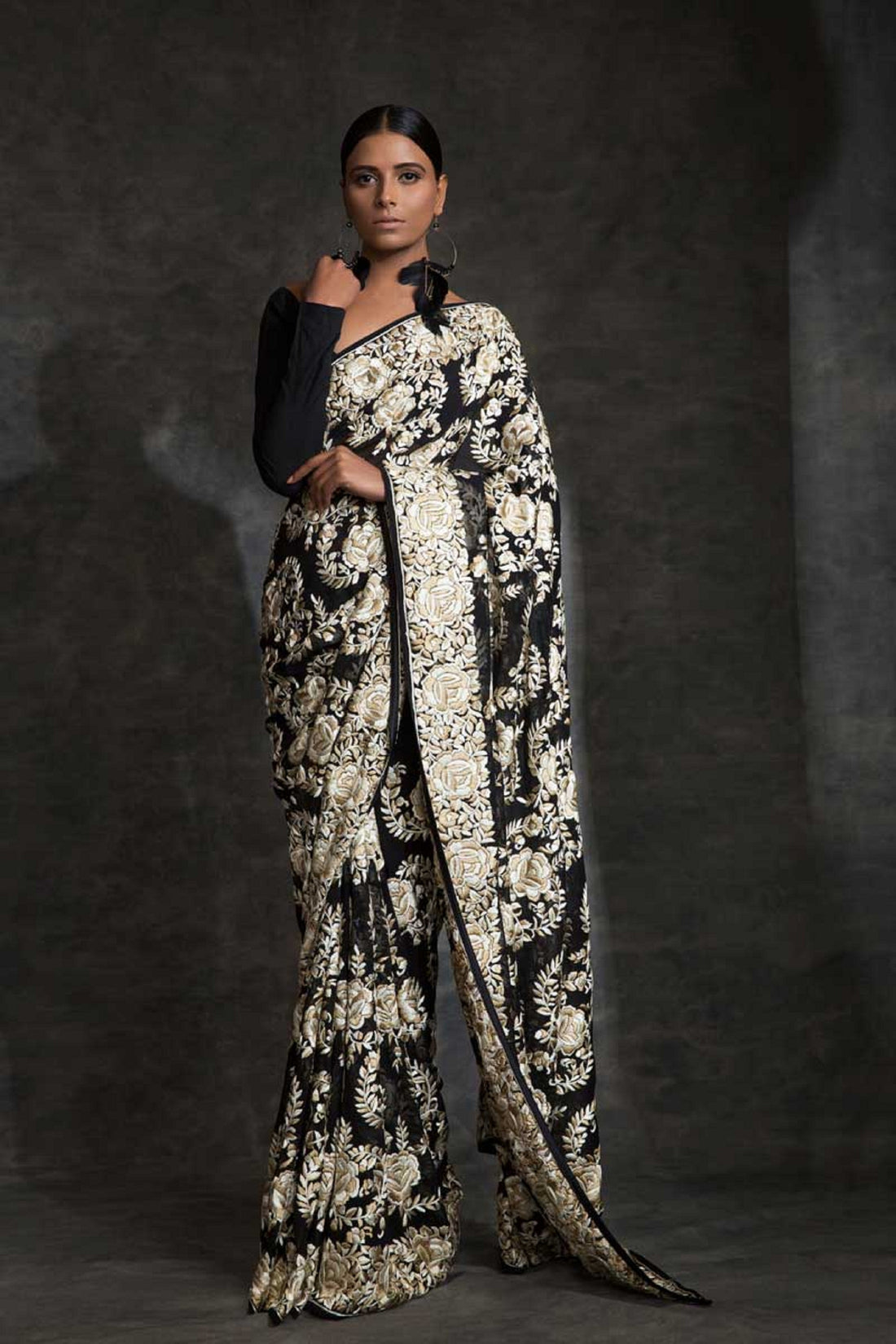In the world of exquisite traditional attire, the Parsi Gara saree stands out as a true masterpiece of art and craftsmanship. Originating from the Parsi community in India, these sarees are a captivating blend of Chinese embroidery and Persian aesthetics. Each Gara saree is not just a piece of clothing but a canvas that tells a story of culture, heritage, and creativity. Let's dive into the enchanting world of Parsi Gara sarees and discover the rich history and intricate beauty they hold.
Origins and History: Parsi Gara sarees have a fascinating history that dates back to the 19th century. These sarees were introduced to India by Parsi traders who had ties with China. The intricate embroidery style of the Gara saree is heavily influenced by the Chinese embroidery art, with motifs like birds, flowers, butterflies, and Chinese pagodas adorning the fabric.
A Labor of Love: Creating a Parsi Gara saree is a labor-intensive process that involves meticulous attention to detail. The embroidery is often done by hand, and it can take months to complete a single saree. Skilled artisans carefully stitch each motif, ensuring that the colors and patterns harmonize seamlessly.
Artistry and Motifs: One of the defining features of Parsi Gara sarees is their unique motifs. These motifs tell stories of nature, mythology, and everyday life. You'll find delicate birds perched on blossoming branches, intricate butterflies fluttering in the air, and scenes from Persian folklore, all beautifully interwoven on the fabric.
Intricate Craftsmanship: The embroidery on a Parsi Gara saree is a fine display of craftsmanship. Intricate stitches like satin stitch, French knots, and stem stitch are used to bring the motifs to life. The color palette is rich and vibrant, with bold hues that catch the eye and create a striking contrast against the fabric.
Modern Interpretations: While traditional Parsi Gara sarees continue to be cherished, contemporary designers have also embraced this art form, giving it a modern twist. You can now find Gara-inspired designs on different types of attire, including blouses, dresses, and accessories, making this unique embroidery style accessible to a wider audience.
Preserving Heritage: As with many traditional crafts, the art of creating Parsi Gara sarees is facing challenges in the modern world. Efforts are being made to preserve this cultural heritage by supporting skilled artisans and raising awareness about the beauty and significance of Gara sarees.
Parsi Gara sarees are not just pieces of fabric; they are living examples of art, culture, and history. Their intricate beauty and the stories they carry make them cherished heirlooms that pass down through generations. Whether worn for special occasions, weddings, or cultural celebrations, the Parsi Gara saree continues to captivate hearts with its timeless elegance and unparalleled craftsmanship.

